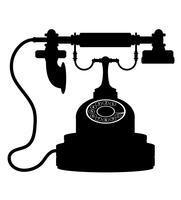A newspaper clipping from The Tacoma News Tribune, dated April 11, 1953, features an article titled “There’ll Be No Escape in Future From Telephones”.
The article quotes Mark R. Sullivan, president of the Pacific Telephone & Telegraph Co., who speculated on the future of the telephone.
Sullivan’s prophecy included the idea that individuals would carry telephones with them, similar to a watch today. He also suggested that future phones might not require a dial and users could see each other while talking.
A final speculation was that the device might even be able to translate between languages.


https://en.wikipedia.org/wiki/History_of_videotelephony
It’s not super surprising that video phones were predicted in the 50s, considering they are almost as old as phones themselves, conceptually, and only lag a bit behind as actual technology.
Additionally the first cellphones were available just before the 50s, so that’s not a huge stretch either.
https://en.wikipedia.org/wiki/History_of_mobile_phones
That’s not really a cell phone; that’s more of a walkie talkie with a phone taped to it